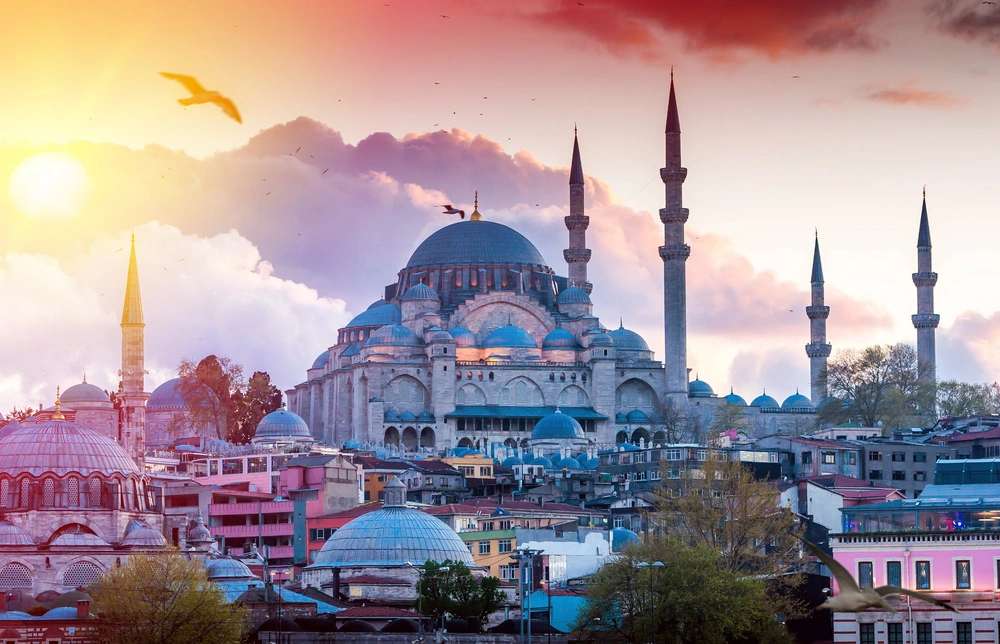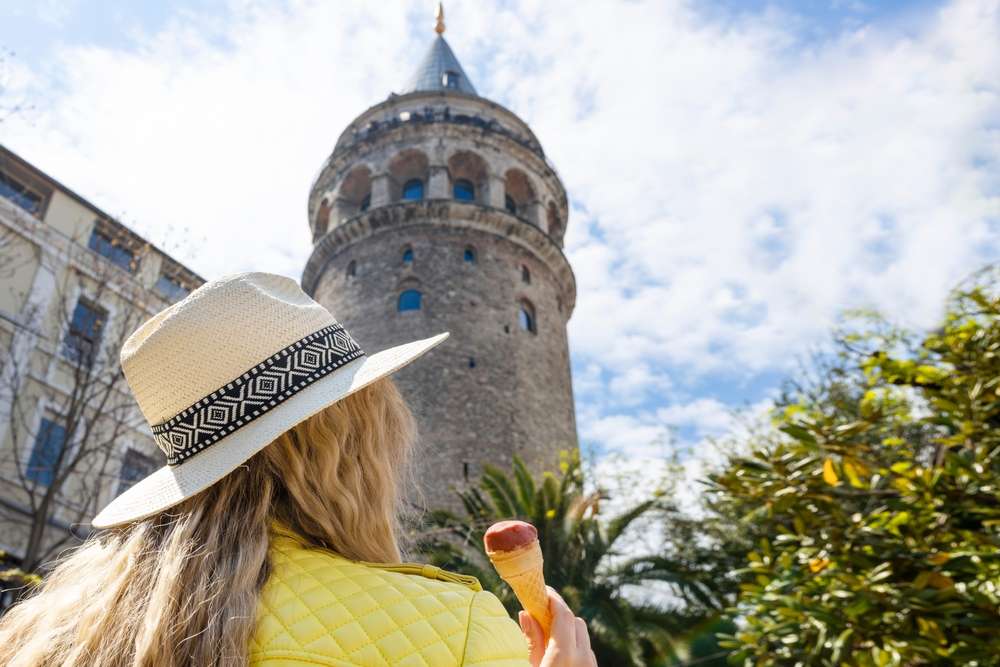
Istanbul Travel Guide
Welcome to Istanbul, a city that captivates with its rich history, cultural diversity, and stunning architectural wonders. Situated at the crossroads of Europe and Asia, Istanbul has been a melting pot of civilizations for centuries. Join us on this enlightening journey through the marvels of Istanbul.

Are Istanbul and Constantinople the same?
Throughout its history, the captivating city of Istanbul has been referred to by various names, each carrying its significance. Apart from its current Turkish name, Istanbul has been known as Byzantium, Constantinople, and Stamboul, all of which contribute to the rich tapestry of its heritage and cultural identity.
How did Istanbul get its name?
The origins of the city can be traced back to 2000 BC, with the Megara king Byzas establishing a colony there in the 7th century, giving it the name Byzantium. Over the centuries, the city saw various invaders and conquerors, including the Persians and Alexander the Great. In 193 AD, the Romans conquered the city and it remained under their control until the 4th century when Emperor Constantine the Great made it the capital of the Roman Empire, renaming it Constantinople.
Throughout its history, the city faced riots and destruction but was always rebuilt. From the 7th to the 10th century, it was ruled by the Arabs and later by the Barbarians. The Fourth Crusades in the 13th century brought significant devastation, forever changing the city.
When the Ottoman Turks conquered the city, they renamed it Islambol, meaning "City of Islam." By the 16th century, Istanbul had become a vital hub of culture and commerce. The name Istanbul itself is a combination of Islambol and "eis tin Polin," which translates to "to the City" in Greek.
The Ottoman Empire held control over Istanbul until World War I. Finally, in 1923, Ataturk founded the Republic of Turkey as it exists today.
Istanbul: A City of Empires
From its foundation as Byzantium in the 7th century BC to the present day, Istanbul has played a pivotal role in shaping the history of humanity in this part of the world. Its strategic location has made it a coveted prize for empires throughout history. As you explore the city, you'll witness the remnants of these great empires that rose and fell, leaving behind an extraordinary legacy.
The Historic Peninsula: A Glimpse into the Past
The heart of Istanbul lies on the historic peninsula, a UNESCO World Heritage site. This triangular piece of land boasts a wealth of historic landmarks, each telling a story of its own.
Where Istanbul is Located: A Bridge Between Continents
Istanbul's unique geographical location is a defining feature of the city. Situated at the crossroads of Europe and Asia, it serves as a bridge between continents. The Bosporus Strait connects the Black Sea to the Mediterranean, and its shores are home to the vibrant neighborhoods that make up Istanbul. This strategic position has shaped the city's history, culture, and identity.
Istanbul's Unique Climate: Where Winds Shape the Seasons
Istanbul's climate is influenced by its geographical location, surrounded by water and connected to two seas. The prevailing northeast wind, known as poyraz, brings a refreshing breeze from the Black Sea. In winter, the karayel, a cold wind from the Balkans, can freeze the Golden Horn and the Bosporus. The lodos, a southwest wind, can stir up storms on the Sea of Marmara. Embrace the changing seasons and pack accordingly to make the most of your visit.
What are Istanbul City's best tourist attractions?
Hagia Sophia
The Hagia Sophia, originally built as a Byzantine church and later transformed into a mosque, stands as a testament to the city's architectural brilliance. Its stunning dome and intricate mosaics will leave you in awe.
The Blue Mosque: A Symbol of Ottoman Grandeur
Just a stone's throw away from the Hagia Sophia, you'll find the Blue Mosque, also known as the Sultan Ahmed Mosque. This magnificent structure, with its cascading domes and six minarets, was built during the Ottoman Empire. Step inside to witness the breathtaking beauty of its blue tiles, giving the mosque its nickname.
Topkapi Palace: A Glimpse into Ottoman Royalty
Delve into the opulent world of Ottoman sultans at Topkapi Palace. This sprawling complex served as the royal residence and administrative center for centuries. Marvel at the exquisite architecture, stroll through lush gardens, and explore the treasury, which houses an impressive collection of Ottoman jewels and artifacts.
Exploring the Bosphorus: Where Europe Meets Asia
One of the most unique aspects of Istanbul is its location straddling two continents. The Bosphorus Strait, separating Europe and Asia, is a sight to behold. Take a leisurely ferry ride along the Bosphorus, sipping on Turkish tea as you soak in the panoramic views. Admire the grand palaces, mansions, and modern museums that line the shores, showcasing the city's rich heritage.
Maiden's Tower: A Romantic Icon
As you cruise along the Bosphorus, you'll spot the iconic Maiden's Tower. This tiny islet holds a fascinating history, ranging from ancient legends to Ottoman military outposts. Today, it stands as a symbol of Istanbul's charm and provides a stunning backdrop for breathtaking views of the city.
Istanbul's Underground Cistern: A Subterranean Wonder
Beneath the bustling streets of Istanbul lies a hidden marvel: the Byzantine underground cistern, also known as Yerebatan. This ancient water reservoir, supported by hundreds of columns, transports you to a mysterious world. Wander through dimly lit pathways as you marvel at the impressive architecture and the eerie beauty of the Medusa heads.
Istanbul Museum Pass: Unlocking the City's Treasures
To make the most of your visit to Istanbul, consider purchasing the "Museum Pass" for foreigners. This pass grants you access to various museums and attractions across the city, allowing you to delve deeper into its rich history and cultural heritage. Explore the treasures of Istanbul at your own pace and immerse yourself in its captivating stories.
Grand Bazaar
Explore the labyrinthine alleys of one of the world's oldest and largest covered markets, where you can shop for exquisite carpets, spices, and handmade crafts.
Spice Bazaar
Immerse yourself in the vibrant colors and intoxicating scents of this historic market, renowned for its wide array of spices and traditional Turkish delights.
Dolmabahçe Palace
Step into the lavish world of Ottoman sultans at this grand palace, adorned with crystal chandeliers, intricate ceilings, and opulent furnishings.
Chora Church
Visit this Byzantine masterpiece, famous for its stunning mosaics and frescoes that depict biblical scenes with exquisite detail.
Princes' Islands
Escape the hustle and bustle of the city and take a ferry to the Princes' Islands, a serene archipelago where horse-drawn carriages replace cars and bicycles reign supreme.
Getting Around Istanbul: Navigating the City's Vibrant Streets
Exploring Istanbul is a delight, thanks to its well-connected transportation system. From buses and trams to ferries and metro lines, you'll have no trouble navigating the city. Embrace the vibrant street life as you wander through the narrow alleys of the historic peninsula or hop on a ferry to cross continents. Istanbul's transportation network ensures that every corner of the city is within reach.
Conclusion: A Journey Through Time and Culture
As your journey through Istanbul ends, you'll carry with you the memories of its awe-inspiring landmarks, the warmth of its people, and the richness of its history. Istanbul's captivating blend of Eastern and Western influences will leave an indelible mark on your soul. Embrace the enchantment of this city, for Istanbul is a destination that transcends time and culture.
Related Tours








































